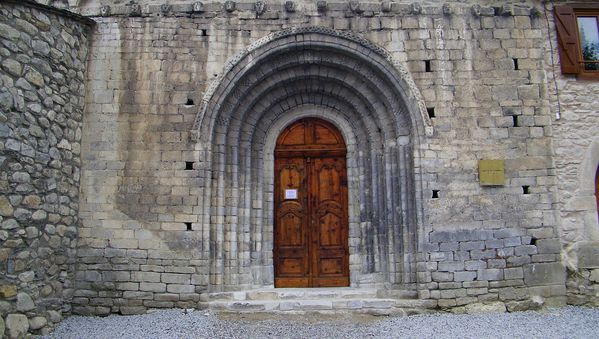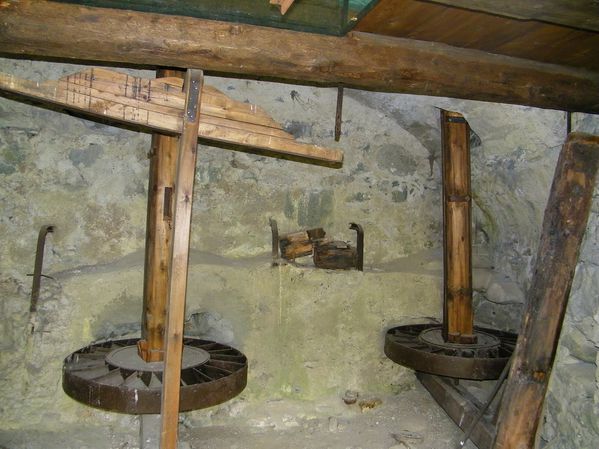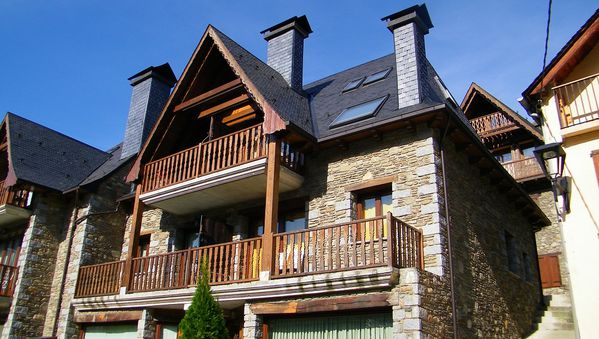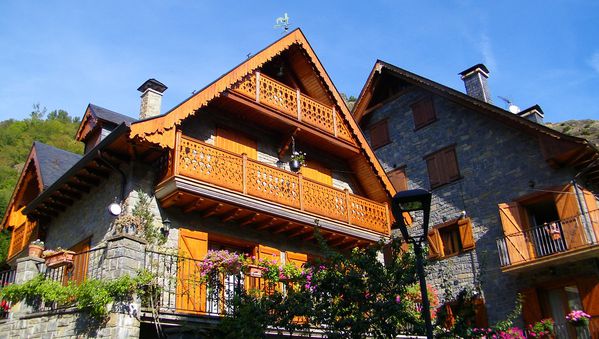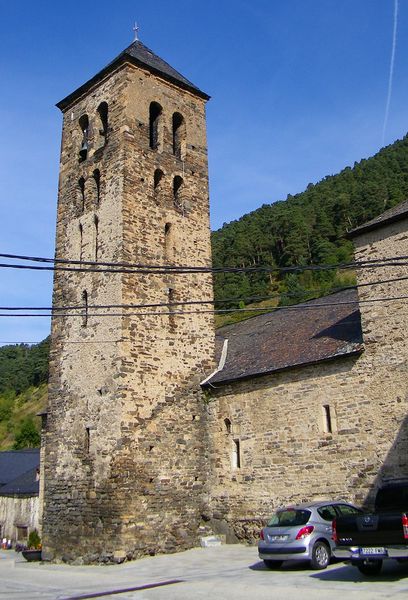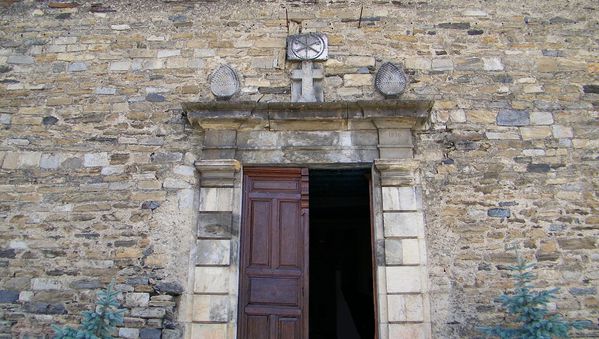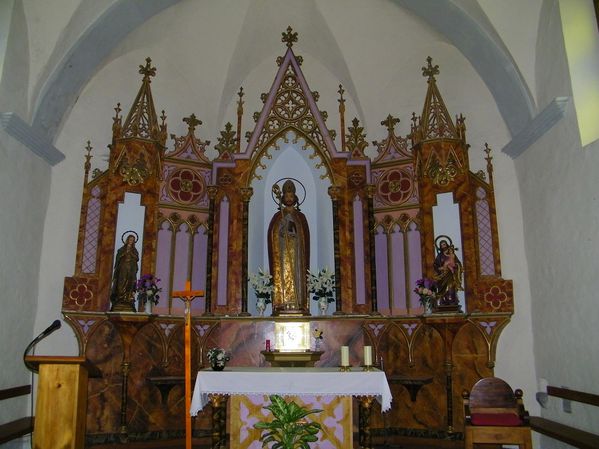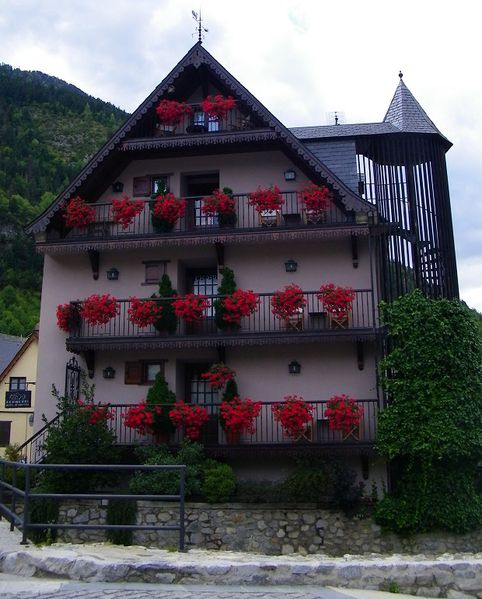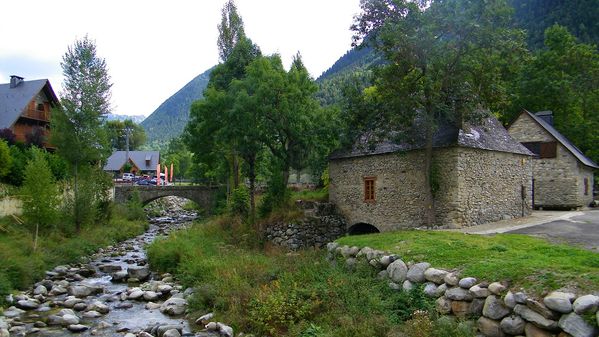October 27 2011
4
27
/10
/October
/2011
13:38
Starting from Bagnères-de-Luchon heading east is the famous Col du Portillon, a high mountain pass in the Pyrenees that connects Luchon to the town of Bossòst in the Val d'Aran of Spain. The climb from Luchon is 10.2 km long while the climb from Bossòst is 8.6 km—quite a gruelling ride for any cyclist. The Col du Portillon was first used in the Tour de France in 1957, and since then it has been featured 18 times, most recently in 2006, when the leader over the summit was David de la Fuente. From the summit, one has spectacular views of the surrounding mountains. Down below is the valley itself with small villages with churches and chapels dating as far back as the 11th century. The information I had about each town was practically nil except for a map with one or two sentences describing all there is to see. I’m not going to go into any history lessons with this post—just some simple explanations of what I saw and where I visited. For more information on each site, click on the highlighted words. I provided links to a site with some fairly decent information. My first stop was the small village of Les. While I was there, I walked the quiet streets until I came to the local church. Although it was very nice inside, I thought that I was visiting the Chapelle de Sant Blas. As it turned out, it was just the village church. Inside, there was an old alter reredos above a glass display case with small statues of venerated saints. Behind the main altar were statues of St-Joseph, St-John the Baptist and Santa Lucía. I missed altogether the 12th century chapel. Walking down the main road, I eventually came to a small chapel which I can only assume is one of many hermitages found in this region. The next stop was the town of Bossòst with its stunning mountain chalets and its 12th century Romanesque church called Église d’Era Mair de Diu dera Purificacion. In addition, Bossòst is surrounded by seven Romanesque chapels that, according to its inhabitants, were built to protect the village from the plague. One of these that I visited was named Chapelle de Sant Joan Crisotòm. (I am using the spellings given on the French tourist map which you can find here as a PDF file.) My third stop was the oldest village in the Val d’Aran, Vilamòs. It is known for its museum where one can see what life in the Val d’Aran was like during the 18th century. The museum, called the Çò de Joanchiquet, has a covered limestone lavoir which dates from 1832. The church of Santa María de Vilamòs dates as far back as the 11th century while the main door dates from 1816. Interestingly, the belfry of the church and that of the church of Bossòst, are the only two Romanesque belfries conserved in the Aran Valley. Halfway down the road, I had to get out of the car and get this photo of the Maladeta mountain range—the day was just too nice to pass it up. My next stop was the capital city, Vielha. The church of Sant Miquèu dates from the 13th century and has a 16th century octagonal bell tower. Inside is a sculpture of Christ called the Crist de Mijaran and was once part of a larger ensemble piece now destroyed. To the right of the main altar are the baptismal font and a beautiful organ. Of course, the most treasured part of the church and something not to be missed are the Gothic and Baroque paintings on some of the arches. They depict the following: Jesus is scourged and a crown of thorns is placed on His head, Jesus in the Garden of Gethsemane with the sleeping apostles Peter, John and James. An angel of God presents Him with the cup of poison (mankind’s sins). To the right is the apocryphal Veronica as she wipes Jesus’ face with her veil, Christ resurrected and to the right, the crowning of Mary, The Magnificat, when Mary is greeted by her cousin Elizabeth and beside it the Nativity of the Lord, The Last Supper. Among other things to see in Vielha are the museum of local history and the stately home Ço de Rodes which serves as a wool museum. Before leaving, I stopped at a grocery store and bought things to make sandwiches for lunch. That's when I headed to the next stop on my journey, the church of Sant Martin de Tours in Gausac. Under the shade of its octagonal tower, I ate my sandwich and then explored the interior which houses a beautiful 12th century baptismal font. After lunch it was off to my next destination, the town of Escunhau with its 11th century Church of Sant Pèir. Its bell tower was added between the 17th and 18th centuries. The tympanum above the door has a sculpted figure of Christ. I was unable to see the interior since it was closed. As it turns out, many churches in the area are closed when it is not peak season. The tourist map that I was using recommended that one visit the oldest home in the Val d’Aran called the Çò de Perejoan, built in 1393. I couldn’t find it anywhere. There were no signs in the town and so I missed it completely. I hate that. The next to last stop was the town of Arties and its 12th century Church of Santa Maria. It has a five-story belfry with a pyramidal roof and dates from the 13th and 14th centuries. Beside the church is a 16th century tower called the Çò de Portola which was part of an old manor house. Also from the 16th century is the Casa Paulet which possesses several large mullioned windows with interesting Renaissance sculptures. This town, just like many of the others I saw in the Val d’Aran had beautiful chalets as well as traditional homes decorated with garlands of corn. The last place I saw was the old mill in the town of Salardú. It is no longer used but it has been restored and is open for tourists during the peak season. All I got to see were the original hydraulic mechanisms underneath the mill that were once powered by the Garonne River which runs around the town. The bridge which connects the town with the mill is of modern construction. I wanted to see more of the region but it was getting late; and you should try driving for 20 kilometers on roads full of hairpin turns throughout the mountains. I felt it was time to call it quits and head back to Bagnères-de-Luchon. My advice to anyone wishing to visit this region is plan on spending more than just one day to see everything. It looks small and reasonable on a map but trust me, there is a whole lot to see and do. Hopefully, I can go back someday.
Published by The Baguette
-
in
Cultural Heritage

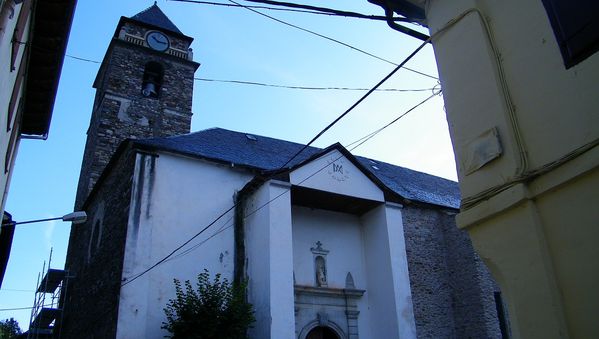
 Inside, there was an old alter reredos above a glass display case with small statues of venerated saints.
Inside, there was an old alter reredos above a glass display case with small statues of venerated saints. 


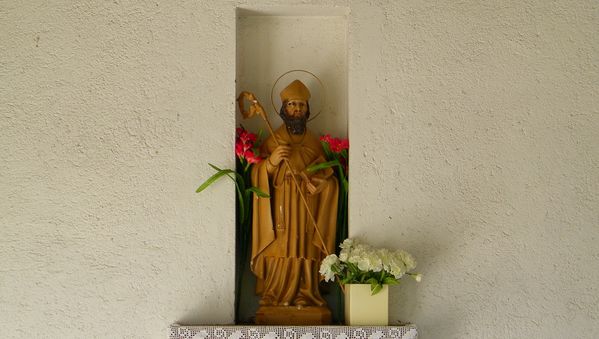

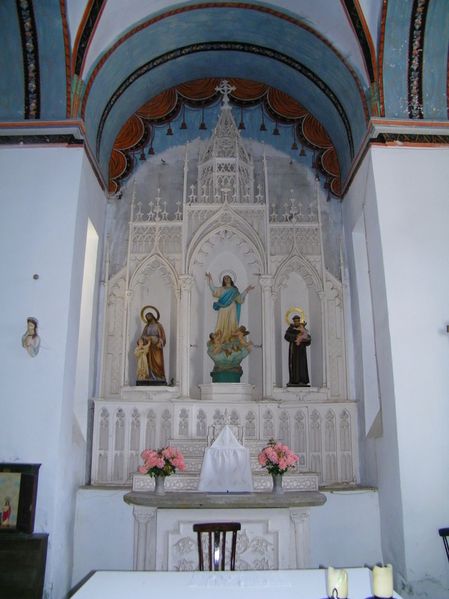
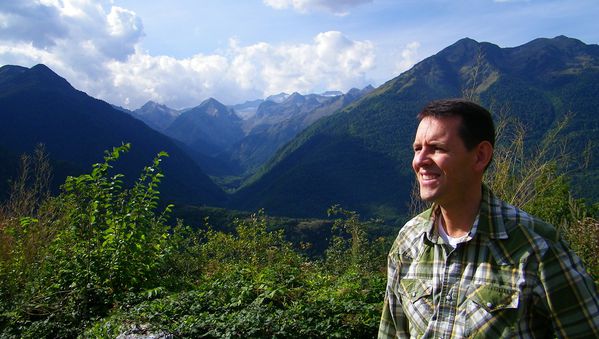

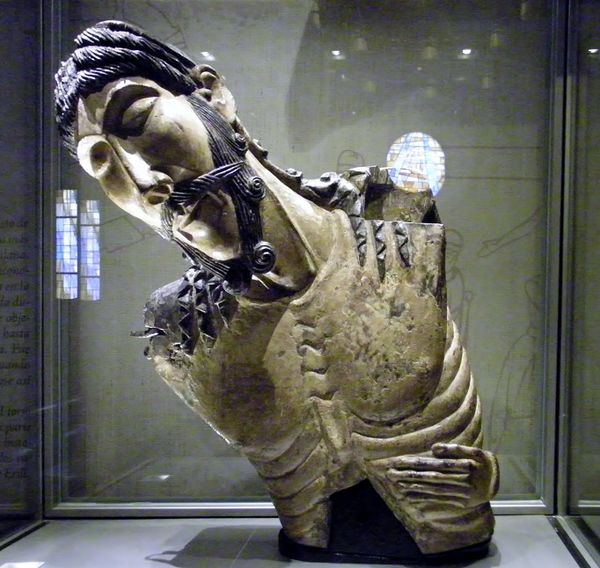 Inside is a sculpture of Christ called the Crist de Mijaran and was once part of a larger ensemble piece now destroyed.
Inside is a sculpture of Christ called the Crist de Mijaran and was once part of a larger ensemble piece now destroyed. 


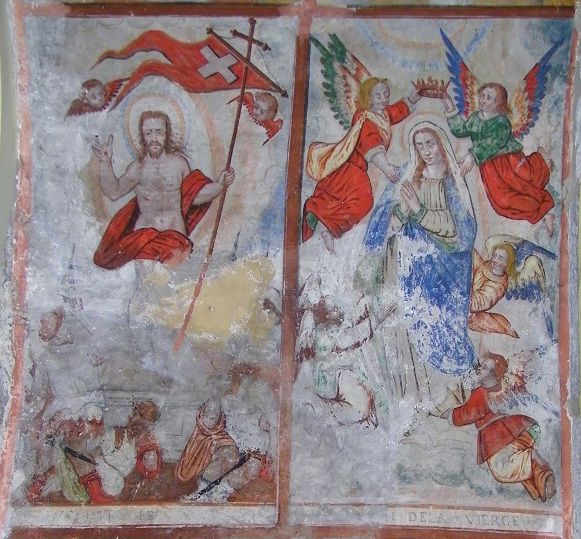 Christ resurrected and to the right, the crowning of Mary,
Christ resurrected and to the right, the crowning of Mary, 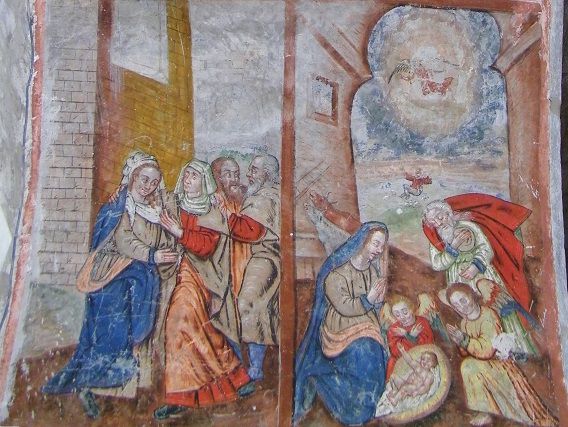 The Magnificat, when Mary is greeted by her cousin Elizabeth and beside it the Nativity of the Lord,
The Magnificat, when Mary is greeted by her cousin Elizabeth and beside it the Nativity of the Lord, 



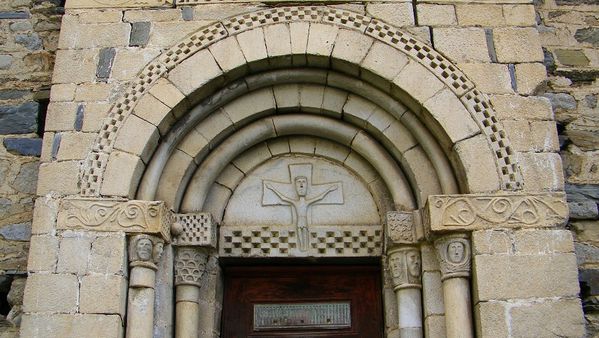 The tympanum above the door has a sculpted figure of Christ. I was unable to see the interior since it was closed. As it turns out, many churches in the area are closed when it is not peak season. The tourist map that I was using recommended that one visit the oldest home in the Val d’Aran called the Çò de Perejoan, built in 1393. I couldn’t find it anywhere. There were no signs in the town and so I missed it completely. I hate that. The next to last stop was the town of Arties and its 12th century Church of Santa Maria.
The tympanum above the door has a sculpted figure of Christ. I was unable to see the interior since it was closed. As it turns out, many churches in the area are closed when it is not peak season. The tourist map that I was using recommended that one visit the oldest home in the Val d’Aran called the Çò de Perejoan, built in 1393. I couldn’t find it anywhere. There were no signs in the town and so I missed it completely. I hate that. The next to last stop was the town of Arties and its 12th century Church of Santa Maria. 